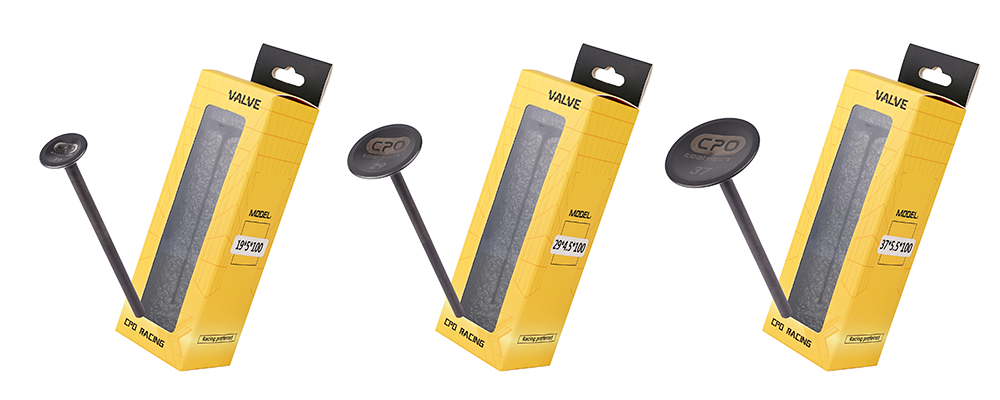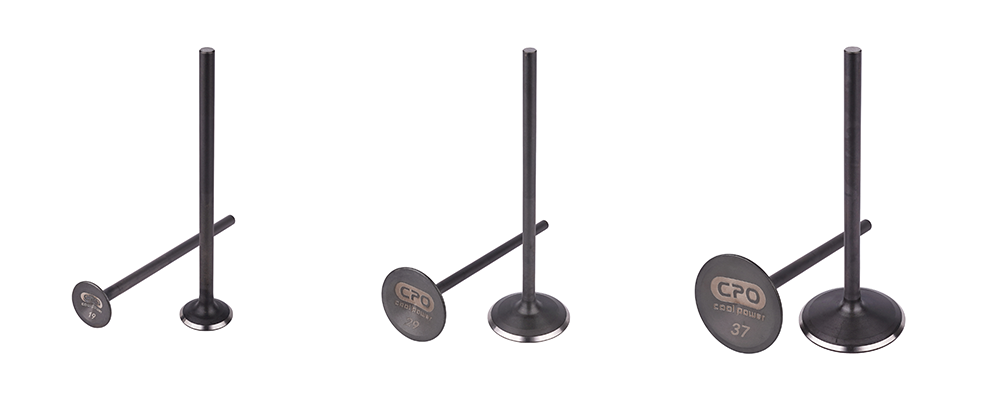Motorcycle valves are critical components of the engine’s valve train, responsible for controlling the intake of air (or air-fuel mixture) into the cylinder and the exhaust of combustion gases from the cylinder. They ensure the engine can efficiently breathe, enabling optimal power output and performance.

I. Performance Enhancement
1.Efficient Intake & Exhaust for Powerful Performance
· Multi-valve Technology (e.g., 4-valve design): Increases cylinder airflow and exhaust efficiency, boosting high-rpm power output. Ideal for sportbikes (e.g., Honda CBR series with 4 valves sees 15%-20% power increase).
·Variable Valve Timing (VVT): Adjusts opening/closing timing based on RPM, ensuring low-end torque for city commuting and high-rpm power for highway riding (e.g., Yamaha R1 with VVT enhances shifting smoothness and top speed).
·Large-diameter Valves: Expands airflow cross-section, reduces intake resistance, and improves combustion efficiency, significantly enhancing engine power and torque (e.g., Ducati Panigale series boosts high-rpm by enlarging exhaust valves).
2.Precise Valve Timing for Optimized Combustion
Valves open/close in strict sync with piston movement (early opening, late closing), maximizing intake volume and exhaust evacuation for 5%-10% better fuel efficiency.
II. Durability & Reliability
1. High-temperature Materials for Harsh Conditions
·Exhaust Valve Heat-resistant Alloys: Made of silicon-chromium steel, tungsten-chromium steel, or titanium alloy, withstanding 600-800°C to prevent deformation (e.g., Kawasaki Z H2 uses hollow sodium-cooled exhaust valves, improving heat dissipation by 30%).
·Intake Valve Corrosion Resistance: Alloy steel with surface hardening resists fuel mixture corrosion, extending service life.
2.Precision Manufacturing to Minimize Failures
·Valve Seat Grinding Precision: CNC grinding ensures ≤0.01mm taper error, preventing air leakage and maintaining stable cylinder pressure.
·Valve Stem Wear-resistant Coatings: Hard chrome plating or nitriding reduces friction with guides, minimizing sticking risks and extending maintenance intervals beyond 20,000 km.
III. Maintenance Convenience
1. Self-adjusting or Long-life Valve Clearance
·Hydraulic lifters (e.g., Honda CB500 series) eliminate manual adjustments, reducing maintenance costs (traditional mechanical valves need adjustment every 10,000-15,000 km).
·High-precision valve-to-rocker fit minimizes clearance changes, requiring fewer checks during routine service.
2.Anti-carbon Design for Reduced Cleaning
·Valve head cones with special coatings (e.g., diamond-like carbon) reduce carbon buildup, extending disassembly cycles.

IV. Technological Innovation & Differentiation
1.Lightweight Design for Better Handling
·Titanium valves are 40% lighter than steel, reducing reciprocating inertia for sharper throttle response and less high-rpm vibration (e.g., Aprilia RSV4’s titanium intake valves improve acceleration by 5%).
2.Emission Compliance
·Efficient exhaust valves paired with EGR systems meet strict standards (China IV, Euro 5), adapting to urban emission regulations.
3.Customization Potential for Modification
·”Race-spec valves” for aftermarket: Larger diameter and optimized angles, paired with high-compression pistons, can boost horsepower by 10-15 hp (e.g., Yamaha YZF-R6 modifications).
V. Application-specific
1.Long-distance Touring: Heat-resistant, low-maintenance valves for continuous high-load riding.
2.Off-road/Adventure Bikes: Reinforced valve springs resist bouncing on rough terrain, ensuring stable power.
3.Urban Commuting: Low-fuel-consumption, quiet-valve tuning for economical and comfortable daily use.

Motorcycle valves play a crucial role in engine performance, ensuring efficient air intake and exhaust gas removal. Modern advancements like hydraulic lifters and titanium valves significantly reduce maintenance and enhance throttle response. Special coatings on valve head cones help minimize carbon buildup, extending service intervals. Race-spec valves offer increased horsepower for aftermarket modifications. How do these technological improvements impact long-term engine durability and reliability? WordAiApi